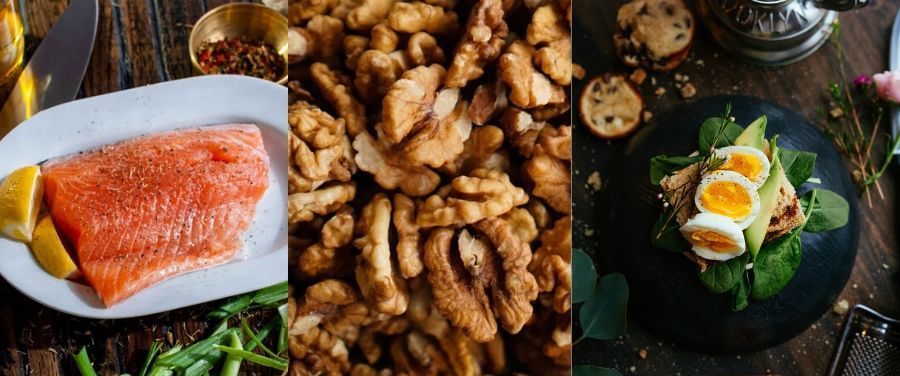Omega-3 fatty acids are generally known for their health-beneficial properties. The human body is capable of synthesizing most fatty acids, but not in the case of omega-3 fatty acids. These essential fatty acids can only be obtained through our diet.
WHAT ARE THE TYPES OF OMEGA 3?
Mainly, omega- 3s are of three types —
Docosahexaenoic Acid or DHA:
Docosahexaenoic acid (DHA) can be obtained directly from maternal milk (breast milk), fish or algae oil.
Ekosapentanenoic Acid or EPA:
Eicosapentaenoic acid is also known as EPA or icosapentaenoic acid. It can be obtained from fish or fish oil, for example cod liver, herring, mackerel, salmon, menhaden and sardines, and a variety of edible seaweed and phytoplankton.
Alpha-Linolenic Acid or ALA:
Alpha-linolenic acid (ALA) is found only in plant-based sources, such as chia seeds, flax seed, walnuts and many common vegetable oils.
WHAT ARE THE BEST SOURCES OF OMEGA 3 FATTY ACIDS?
Omega-3 fatty acid plays an important role in the development and proper functioning of the human body. Some of the main source of omega-3 fatty acids may include —
1. Flax Seeds:
Being the highest omega-3 in flax seeds, they are considered a superfood. These flax seeds help to fight against cancer, reduce the amount of sugar and help control weight. Omega 3 fatty acids are found in both flax seeds and flax seed oil. Seeds are red or brown in color, which appears light golden and yellow.
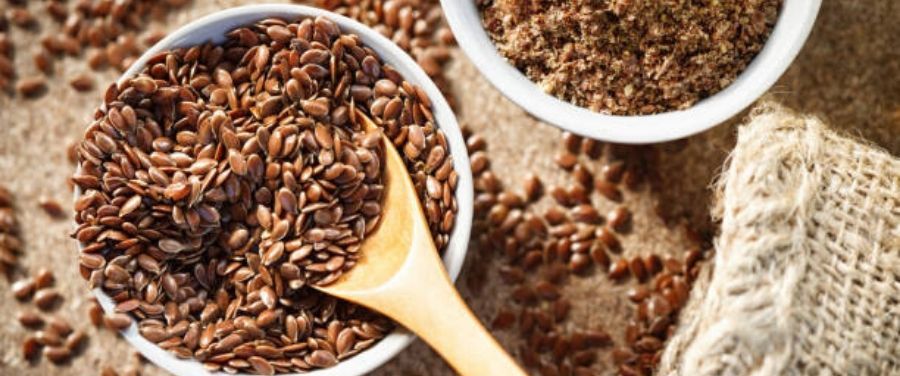
The outer layer of flax seeds is very difficult to digest, but it contains the most nutrients. One cup (about 168 g) of flax seeds contain (✔️) —
- 897 calories
- 48.5 g carbohydrates
- 45.9 g dietary fiber
- 30.7 g protein
- 428 mg calcium
- 9.6 mg iron
- 658 mg magnesium
- 38325 mg total omega-3
- 9931 mg total omega-6
You can buy flax seeds from any local grocery store as far as flax seeds oil is concerned. It is better to remove oil by grinding it in the middle instead.
The biggest advantage of flax seed is that you can eat it in the form of seeds by mixing it in oatmeal or any other dish. Also, you can consume it with protein shake and other frozen things.
2. Chia Seeds:
Chia seeds contain omega-3 fatty acids, which have been used as the main source of energy for many years. These seeds are small and contain fiber, protein, calcium, magnesium and phosphorus. Unlike other seeds, our bodies don’t need to work too hard to absorb these nutrients. It can also be used as a substitute for whole grains. Using one to two teaspoons of chia seeds each day can provide you with sufficient amounts of omega-3 fatty acids.
Chia seeds not only contain omega-3 in abundance, but are also a good source of vitamins, minerals and fiber. Due to the calcium, protein and magnesium present in them, they reduce the risk of diabetes, improve exercise performance and also provide benefits to the brain. Chia seeds can also be used by sprinkling them on yogurt, cereals and salads. Using 1 to 2 teaspoons of chia seeds per day provides you with sufficient amounts of omega-3 acids.
One ounce (about 28 g) of chia seeds provide (✔️) —
- 137 calories
- 12 g carbohydrates
- 177 mg calcium
- 265 mg phosphorus
- 44.8 mg potassium
- 5.3 mg sodium
- 4915 mg total omega-3
- 1620 mg total omega-6 fatty acids
3. Walnuts:
Walnuts are found to be very nutritious and fiber rich. Walnuts should be consumed without removing the skin because it contains antioxidants, called phenols.
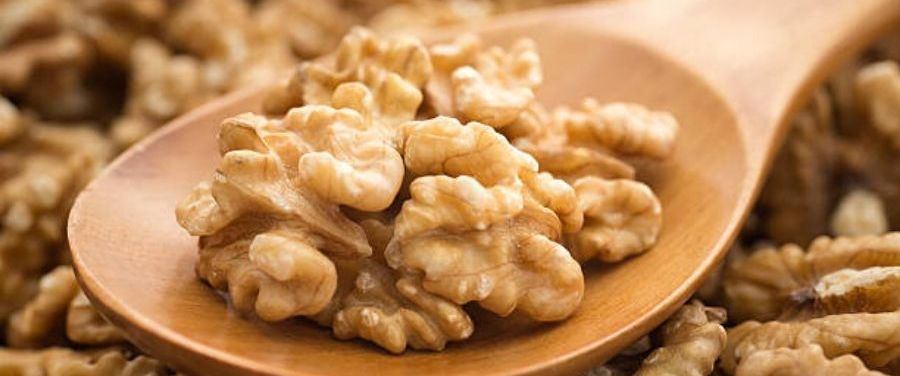
Be sure to include walnuts in your favorite baked dishes. Walnuts are rich in omega-3, they not only provide you with many vascular benefits, but also help keep your weight under control over time. One cup (about 117 g) of chopped walnuts contain (✔️) —
- 765 calories
- 16 g carbohydrates
- 76.3 g fat
- 115 mg calcium
- 3.4 mg iron
- 185 mg magnesium
- 405 mg phosphorus
- 516 mg potassium
- 2.3 mg sodium
- 3.6 mg zinc
- 10623 mg omega-3
- 44567 mg total omega-6 fatty acids
4. Soybeans:
Soybeans are found in sufficient amounts of omega 3 fatty acids. It is a good source of fiber and vegetable protein, as well as, high amounts of other nutrients including riboflavin, folate, vitamin K, magnesium, and potassium. Soybeans have ALA, which promotes heart health. A lightly cooked soybean bowl has more omega-3 fatty acids than fish.
One cup (about 172 g) of matured soybeans contain (✔️) —
- 298 calories
- 17.1 g carbohydrates
- 175 mg calcium
- 8.8 mg iron
- 148 mg magnesium
- 421 mg phosphorus
- 886 mg potassium
- 1.7 mg sodium
- 2 mg zinc
- 0.7 mg copper
- 1029 mg omega-3
- 7681 mg omega-6
5. Eggs:
People who do not like fish can replace eggs with it because eggs are one of the foods rich in omega 3 and omega 6 fatty acids. Along with this, proteins, vitamins and minerals are abundant in eggs.

One large raw egg (about 50 g) contain (✔️) —
- 71.5 calories
- 5 g fat
- 26 mg calcium
- 0.9 mg iron
- 6 mg magnesium
- 95.5 mg phosphorous
- 67 mg potassium
- 70 mg sodium
- 37 mg omega-3
- 574 mg omega-6
6. Canola Oil:
Omega-3 fatty acids are found in canola oil. It is used as the healthiest salad and cooking oil. It is cheaper than olive oil and is suitable for cooking at high temperatures due to its low saturated fat content. It is said that it is beneficial for our health as well as being a good source of omega-3 fatty acids.
One cup (about 218 g) canola oil contains (✔️) —
- 1927 calories
- 218 g fat
- 38 mg vitamin E
- 19921 mg omega-3
- 40646 mg omega-6
7. Cauliflower:
Cauliflower is a food rich in Omega-3 fatty acid, as well as, other nutrients such as potassium and magnesium. It is also a good source of vitamin C, folate, vitamin K, vitamin B and vitamin E. It provides important minerals such as calcium, magnesium, phosphorus, potassium, zinc, sodium and iron. It is a good source of protein, contains omega-3 fatty acids that regulate cholesterol levels and prevent heart disease.
One cup (about 100 g) raw cauliflower provides (✔️) —
- 25 calories
- 2 g proteins
- 5.3 g carbohydrates
- 2.5 g fiber
- 46.4 mg vitamin C
- 16 mcg vitamin K
- 57 mcg folate
- 22 mg calcium
- 15 mg magnesium
- 44 mg phosphorous
- 303 mg potassium
- 30 mg sodium
- 37 mg omega-3
- 11 mg omega-6
8. Salmon:
Salmon is one of the best source of omega-3. Salmon fish are enriched with vitamin D, as well as, a great source of omega-3 fatty acids, protein and phosphorus. Salmon has high amounts of omega 3 fatty acids, which are found in the form of EPA and DHA.
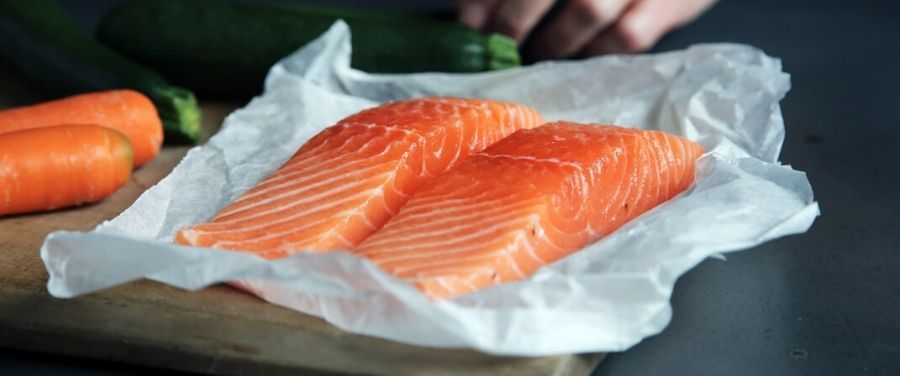
This fat reduces heart disease by reducing inflammation. Consuming salmon fish two to three times in a week reduces disease, such as heart attack, high blood pressure, embolism and arrhythmia. One ounce (about 28 g) cooked salmon fish contains (✔️) —
- 57 calories
- 3.5 g fat
- 42 mg calcium
- 8.4 mg magnesium
- 70.6 mg phosphorous
- 108 mg potassium
- 17 mg sodium
- 633 mg omega-3
- 186 mg omega-6
9. Cod Liver Oil:
Cod liver oil is used as a supplement in food. As the name itself suggests, this oil is extracted from the liver of cod fish. This oil contains omega-3 fatty acids, as well as, vitamins D and Vitamin A are also found in good quantity. By taking just one tablespoon of cod liver oil, you get more than 3 nutrients. Cod liver intake should not exceed one teaspoon. Its because it is high in vitamin A and too much vitamin A is harmful to health.
One tablespoon (about 14 g) cod liver oil contains (✔️) —
- 122 calories
- 13.5 g fat
- 77 mg cholesterol
- 2664 mg omega-3
- 126 mg omega-6 fatty acid
10. Sardines and Mackerel Fish:
Sardines contain high amounts of sodium and omega-3. It is less expensive than other fishes and has a small amount of sodium and you can include it to replenish sodium in your diet.
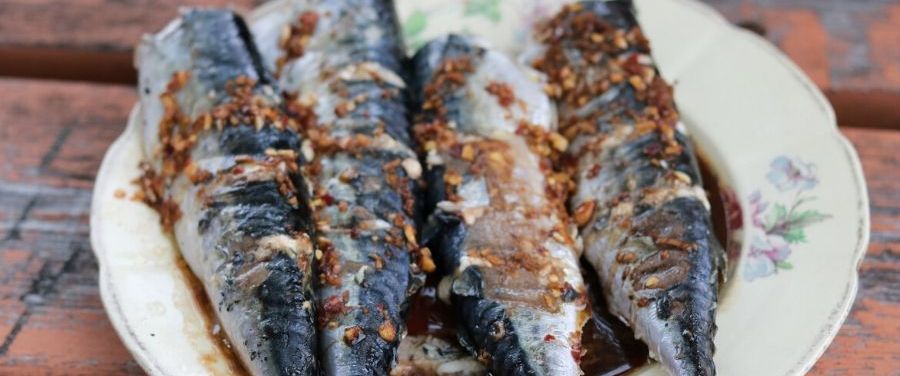
While, mackerel fishes are small in size, but fatty and tasty and are incredibly beneficial. In addition to omega 3, this fish is rich in nutrients, vitamins B6 and vitamin B12.
FINAL WORDS
Omega-3 plays an important role in a healthful life. It may help to prevent cardiovascular diseases, controls weight, reduce blood pressure, protect against breast cancer and is also good for skin, hair and brain. Vegetable source of omega-3 may include walnuts, cauliflower, canola oil, soybeans, chia or flax seed. While eggs, salmon, mackerel, sardine fishes or cod liver oil are non-veg sources of omega-3 fatty acids.
RELATED ARTICLES:
